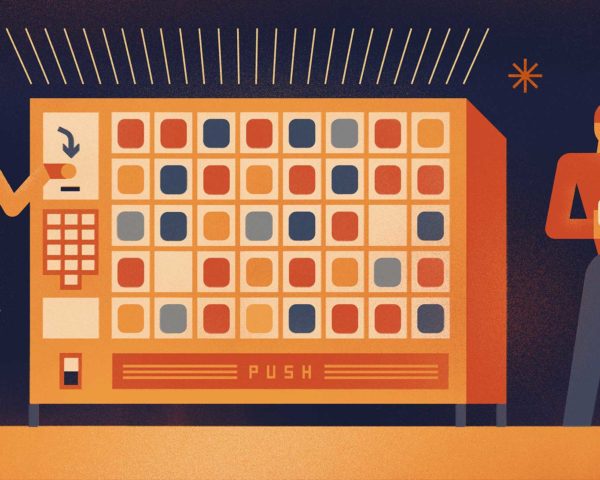5-second summary
- It’s tempting to cater to a small number of large customers with deep pockets, but this choice comes with downsides like higher overhead that run counter to the flywheel model.
- For a flywheel business, balancing the needs of enterprise customers with the needs of smaller customers is like navigating a Super Mario-style obstacle course – but it can be done.
- Look at your backlog, pricing model, and financials for clues as to whether you’re losing your footing (or have already fallen into hot lava).
This article is part of our series on using the flywheel model to grow your business. Check out the complete collection here.
Enterprise customers are key partners in the growth of most B2B startups. So much so, that it’s tempting to put that partnership above everything else. As soon as you land one large deal, the next logical question is “How do we land another?” You might reach out to your existing enterprise contacts to learn what it takes to land more customers like them. And if you do, you’ll probably come back from those meetings with an answer to your question, and a list of items for your backlog.
This is where you, I, and anyone aiming to run a business based on the flywheel model, should pause.
Flywheel companies are volume-based businesses by definition. Most of your customers will likely be small and medium-sized businesses who appreciate the favorable cost-to-value ratio a volume-based vendor like you delivers. The catch is that you can’t build a volume business if a handful of large customers dictate what’s on your roadmap.
Granted, there are many successful software companies that focus solely on enterprises. And if that’s your strategy, then this article won’t be helpful. But if you’re looking to build a business based on the flywheel model, you need to understand the potential pitfalls related to serving large organizations and proactively address them. Trying to satisfy one type of customer without alienating the rest is like making your way through a video game quest, dodging gremlins and watching for trap doors. You can slay the dragon – but you’ll have to stay on your toes.
Companies that can’t balance small and large customers risk falling into a deep, dark pit. So how do you know if you’ve lost your footing? Here are a few signs.
Signal #1: enterprise requirements dominate your backlog
When growing companies begin prioritizing large customers for the sake of short-term revenue, it can impede the growth of their customer base over the long term.
While enterprise deals typically mean more money, they also mean more addendums, stipulations, and technical requirements your R&D team has to address. An IT department – especially one that’s been around thirty years – could conceivably request a dozen, or a few hundred because they’re charged with ensuring your technology addresses their needs around scale, compliance, and integrations.
These are all valid requests but they distract you from capabilities that would delight the masses who’d be perfectly happy using your product as-is. And there are a lot more small and medium-sized companies out there than enterprises, which is noteworthy for anyone growing a volume-based business.
Enterprise-specific requirements can quickly overtake your R&D budget. Even established tech giants you know and use daily struggle to meet all the demands thrown at them; imagine the stress it puts on an early-stage B2B company. And yet, the temptation of those juicy enterprise deals can be hard to ignore.
Many organizations start telling themselves it’s easier to land ten enterprise customers with similar requirements than it is to land a thousand smaller customers. And they wouldn’t necessarily be wrong. Going down a pure enterprise path is a really fast way to grow your business. But I guarantee you won’t have a flywheel business and, as such, the audience for your product will be smaller than it could be.
If you’re serious about the flywheel, early R&D efforts should focus on optimizing on attracting as broad a cross-section of customers as possible. Atlassian, for example, always had enterprise customers but really didn’t start focusing R&D efforts on enterprise-specific requirements until we had well over 10,000 companies as our customers. By that point, we had a strong enough foundation in products that deliver the greatest value for the greatest number of customers that we didn’t risk corrupting our flywheel DNA by offering customizations that cater to our largest customers.
This approach requires discipline. It won’t be one decision that makes or breaks your focus, but dozens of small decisions that potentially erode your flywheel. Grow your base and fuel your flywheel by doing the work that keeps the most customers happy. You’ll land a few enterprise customers along the way, which will help you decide if they’re a segment you want to focus more on in the future.
Signal #2: you take pricing off your website
If your R&D approach starts to prioritize enterprise customers, your go-to-market (GTM) priorities will naturally follow suit. You want to get the most return on those R&D investments, right? If pricing gets removed from your website, that’s a sign your GTM shift is already well underway.
The more dependent your company becomes on large customers, the more you’ll negotiate every transaction – partly because large customers simply expect to negotiate deals, given the amount they’re spending with you. Each of these behind-the-scenes deals is exclusive to a specific customer. As the vendor, any evidence of what you’ve charged someone else reduces the leverage you have at the bargaining table. Any webpage mentioning standard prices is a liability. So you take that page down.
Then what about all the additional resources needed to manage bespoke deals? No doubt about it, custom quotes take more human touch to negotiate and nurture to completion. They also take away money and headcount from building the low-touch discovery, education, and purchasing experiences your flywheel relies on.
Make no mistake: today’s custom contract only makes it harder to flex those self-serve muscles tomorrow. Every day you wait to share pricing, it becomes less likely you ever will due to the increasing number of special, in-flight deals that announcement puts at risk.
Your best bet is to adopt open and transparent pricing today. Atlassian displays pricing information for small and enterprise businesses alike right on our website. We even share our entire philosophy behind those numbers. Whatever short-term revenue we lose in doing so is still far less than the business we gain in the long run.
Signal #3: sales become unpredictable
Still unsure your quest is on the right track? Just check the financials from that rapidly growing enterprise sales team of yours. If revenue is nearly flat for most of the quarter and then tilts up like a hockey stick toward the end, you’re teetering. If 80% of quarterly deals close in the last two weeks, that’s a pretty good indication you’ve already fallen.
What causes this last-minute, “hockey stick” phenomenon?
For traditional sales teams, targets get set on a quarterly basis. Enterprise customers know this, which means they know they’ll have more leverage at the end of a quarter. Meanwhile, vendors who might’ve quoted high prices at the start of the quarter magically find ways to lower that bid when they start feeling pressure to close at the end. All of this eleventh-hour haggling is unnecessary and leads to unpredictability in the sales cycle.
It’s safe to say that deals struck in crunch time tend to benefit the customer more than the vendor. The sale will likely come with strings attached – that is, niche requests that keep you from branching out to build a broader customer base, which only reinforces your dependency on the enterprise customer and… I think you see where this is going. Earlier, we imagined a flywheel getting halted in its tracks. Here, its motion is being reversed to the point where someone else is driving your roadmap.
Historically, Atlassian has avoided this vicious cycle by embracing a non-traditional sales approach. We keep all of our pricing and contracts as standard as possible and work with our vast ecosystem of partners to scale our go-to-market efforts. Partnering with specialists who know certain markets or regions better than we ever could is a much more reliable approach to landing sales throughout a quarter. Certainly, it’s more efficient than relying on a few big deals to make or break the quarter.
Build with heart and balance for all customers
Twenty years in, Atlassian continues to walk the line, weighing the big bucks that enterprise deals provide today against the high volume of smaller customers who fuel our flywheel for the long term. Rather than privileging one over the other, the key here – to quote a company value – is to build with heart and balance. For this reason, I make a point of checking in with our largest customers and our smallest customers alike.
Doing so ensures my business priorities are in equilibrium. What’s more, today’s small businesses will be the largest companies in the world tomorrow. They’ll remember that we took care of them when they were small. If you want to grow every customer into an enterprise customer, be patient in the beginning and stick to your model at every stage.
Juggling the needs of companies big and small takes discipline. Staying on course isn’t a matter of making one big decision, but a hundred small decisions every day. The tradeoffs won’t always be easy. But move at a steady pace and keep your eyes pointed forward, they’ll continue to be your decisions. The minute the allure of quick cash turns your head, however – watch out. You’ll tumble off the ledge, and before you know it, the decisions will be made for you.
Hungry for more? Check out the other articles in this series.
Thanks to Jeremy Grace for his contributions to this post.












































